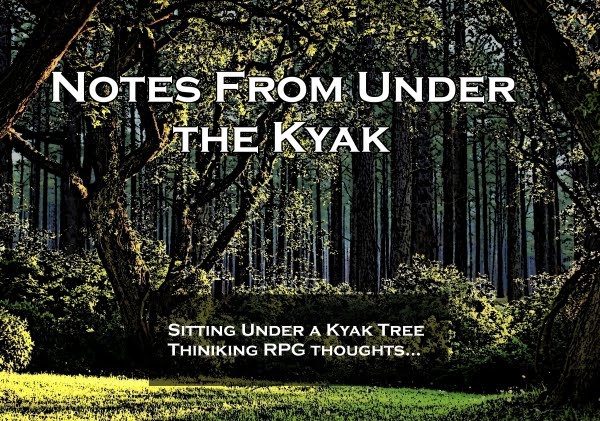
So where do all those undead baddies come from, anyway? Does somebody cast an animate dead spell and then make it permanent? I know that some undead...um...make more of their kind, and some aspire to lichdom (really?) but there's a lot of undead floating around Daen Ral.
And it occurred to me that if in Daen Ral the Elves and the Dwarves are spiritual beings cast from heaven during a rebellion who actually repented of their rebellion (thus weren't cast into the underworld with the demons and devils who are still rebellious angelic beings), then these beings are immortal, right? That is...I think they kind of "live on" no matter what. So...when their physical bodies are "killed" they...become something else.
Here's the skinny - though no non-dwarf or non-elf has ever witnessed it, when a dwarf or elf dies, their kin or comrades bury them in elaborate (and very guarded & trapped) tombs and then the "Spirit Watch" commences. The Spirit Watch is a 10 day watch at the entrance of the tomb. If the demihuman died with "evil in its heart" then it rises as an undead creature. The Spirit Watch is to assure the creature (which will rise on the 8th day, if ever) can't break out of the tomb. Yes, demi-human tombs are secured and trapped and guarded to keep the dead IN the tomb, though to a tomb raider, a trap is a trap... Anyway, after ten days, the tomb is abandoned and is a place that the demihumans will avoid if at all possible. Generally, these tombs are constructed as far from the elven and dwarven lands as possible.***
However, sometimes elves or dwarves die and their remains are unburied. Then if the demihuman rises as undead, there often isn't anyone around to stop it from wreaking havoc on the living. These are the roaming undead of myths and legends (well, most of them).
So here's the stuff:
Skeletons are non-undead, just animated bones, so they can be the remains of literally anything.
Zombies are human undead. They're the only "natural" human undead (see below).
Dwarves become the "earthy" undead - ghouls, ghasts, etc.
Elves become the "ethereal" undead - wraiths, vampires, liches, etc.
I'll try to come up with a more comprehensive list once I break out the Daen Ral Beastiary (which I've been compiling for a year or so now...sigh) and see just what undead exist in the world of Daen Ral.
Vampires, Wraiths and the like can cause slain opponents to rise as "lesser" types of undead - I'll still allow that, and a human slain by a vampire becomes a lesser vampire, a human slain by a wriath becomes a lesser wraith, etc. Still on the fence about things like Death Knights and the like. We'll see...
So that gives me lots of opportunities for undead haunted tombs that are really nasty (Tomb of Horrors can have a purpose now...) and the megadungeon from my youth that's really just a series of unrelated tombs now has an anchor.
And maybe lots of treasure is buried with the body because treasures somehow "soothe" undead spirits - so that even if they do rise as a lich or whatever, when they are surrounded by gold and silver and gems and the like, they are less likely to rampage across the countryside.
Another hook in this is that if, say, a spectre was raiding a village, there could be elves in the forest nearby trying to hunt it down to destroy it - but also trying to stay hidden from the humans in the area...
Food for thought....
*** One of the few times a human being might see elves is when they move their dead to a tomb. They always move at night and try to stay far away from human civilizations as they can, but the tomb complexes that they bury their dead in sometimes force them through human lands. The dwarves move through the Deeps, so they never pass through human lands with their dead. Eversnow Mountain in the Midlands is one area that is riddled with elven and dwarven tomb complexes.
 I found this in a random search, but it's exactly the kind of castle that I want to put on top of a megadungeon. I've included the floor plan from this page. So for one of my challenges, I'm going to try to "populate" the first floor of this puppy. I'm pretty rusty, so I might just break out the dice and the stocking chart from either B/X or AD&D DMG.
I found this in a random search, but it's exactly the kind of castle that I want to put on top of a megadungeon. I've included the floor plan from this page. So for one of my challenges, I'm going to try to "populate" the first floor of this puppy. I'm pretty rusty, so I might just break out the dice and the stocking chart from either B/X or AD&D DMG.



































.png)



.png)











.jpg)






















































.jpeg)














































.png)
























































































































